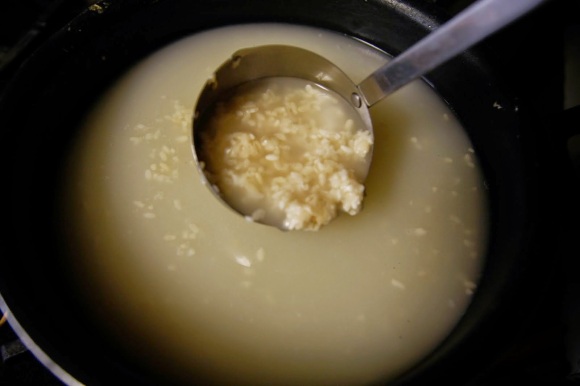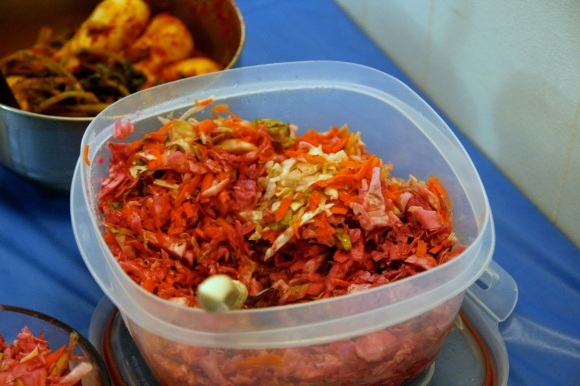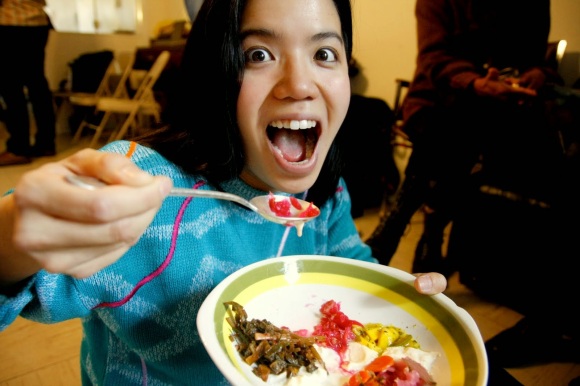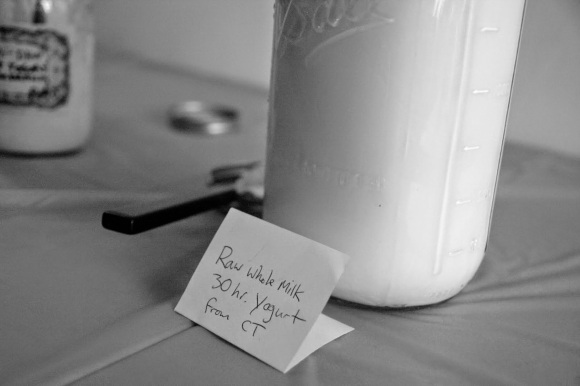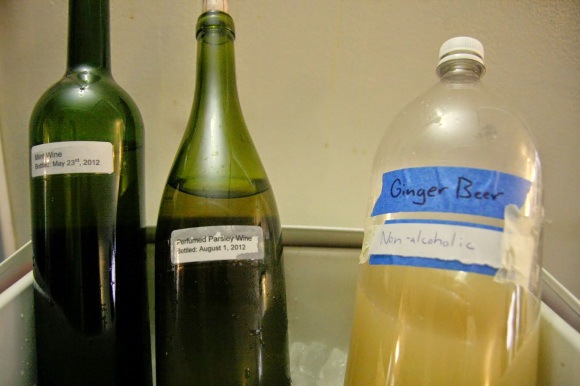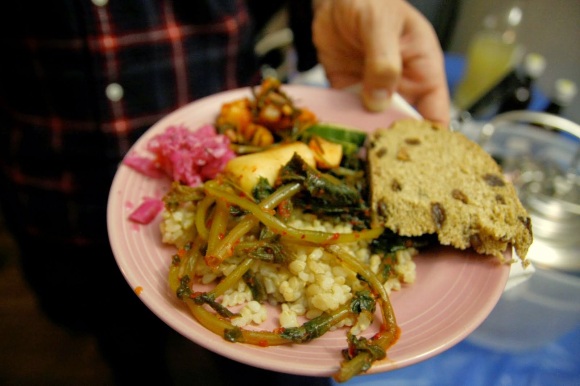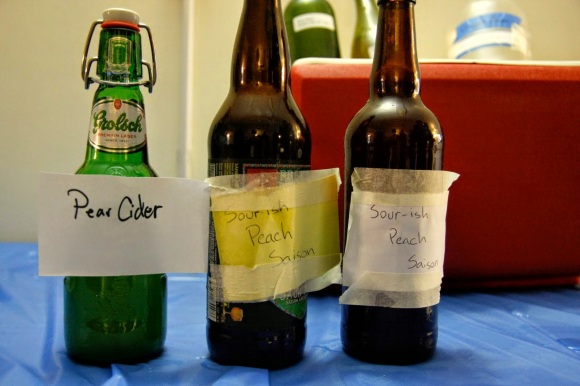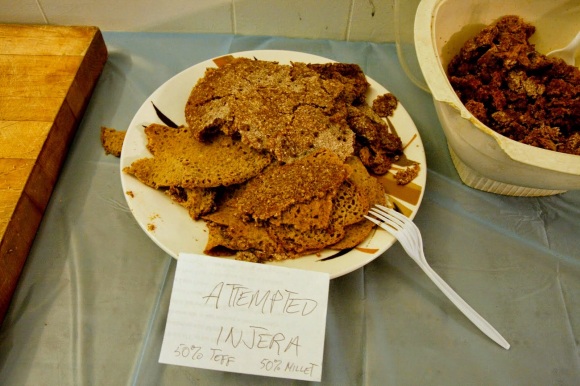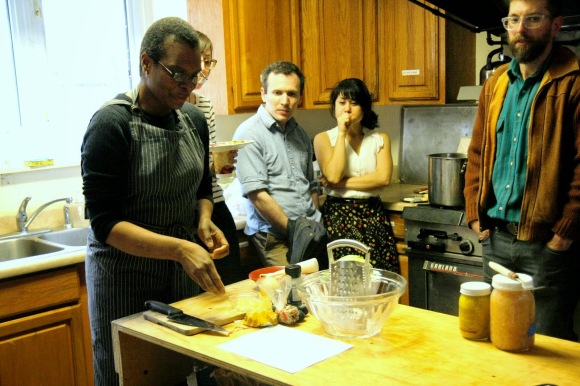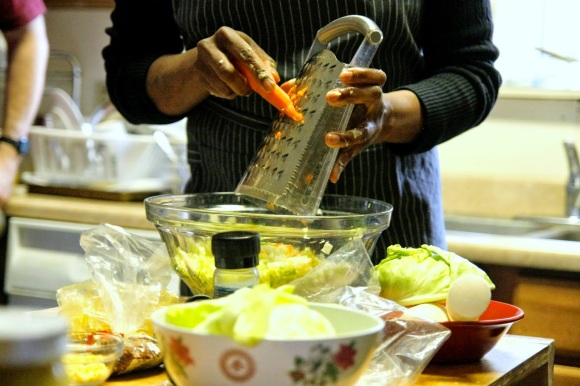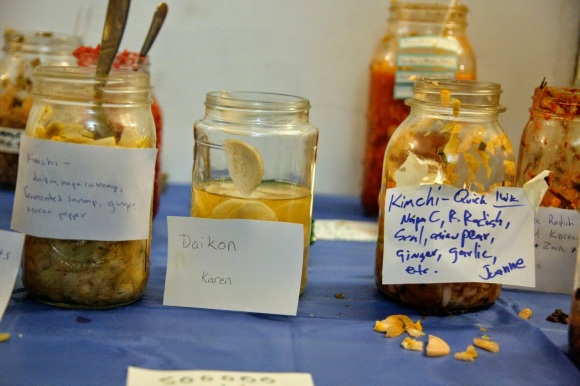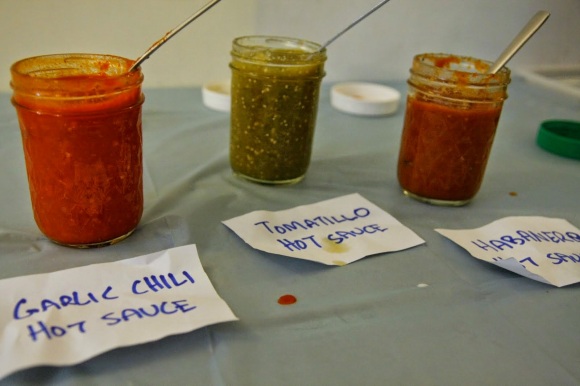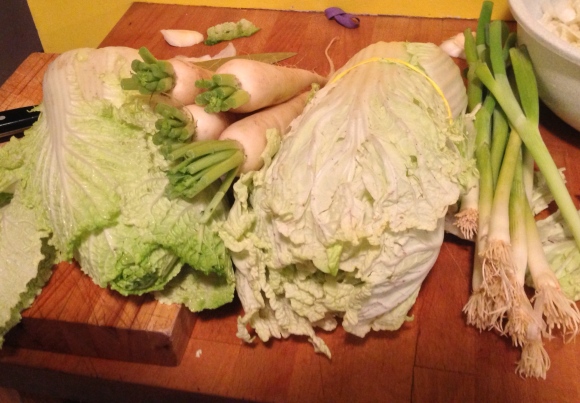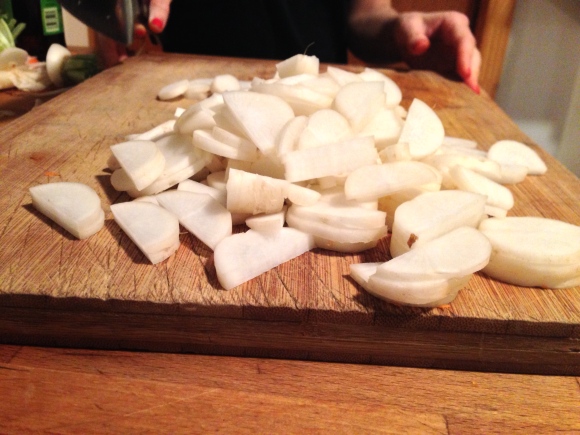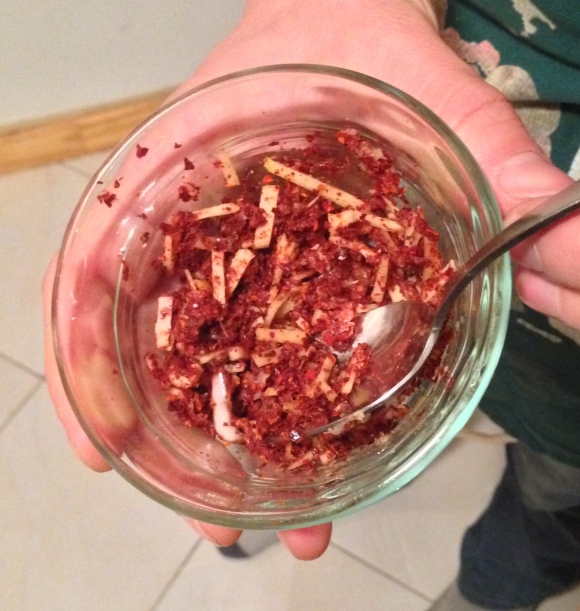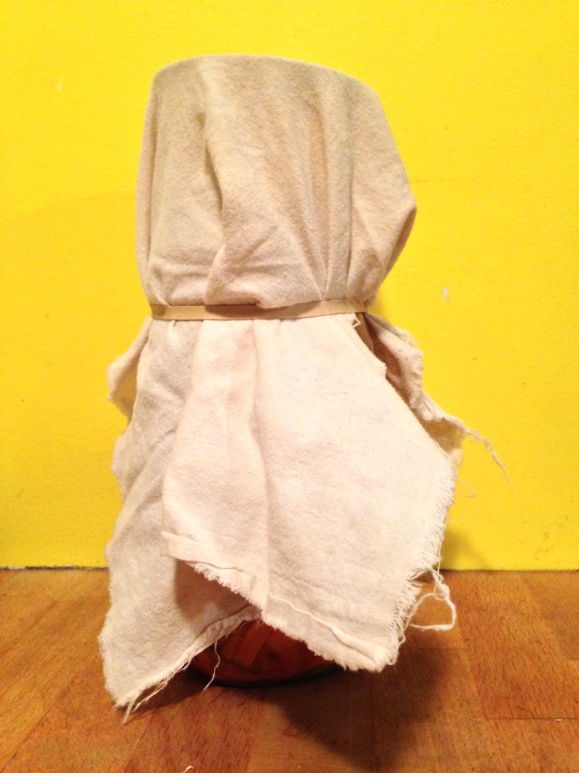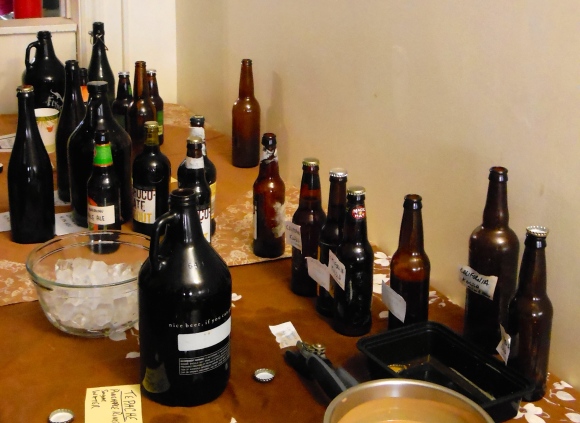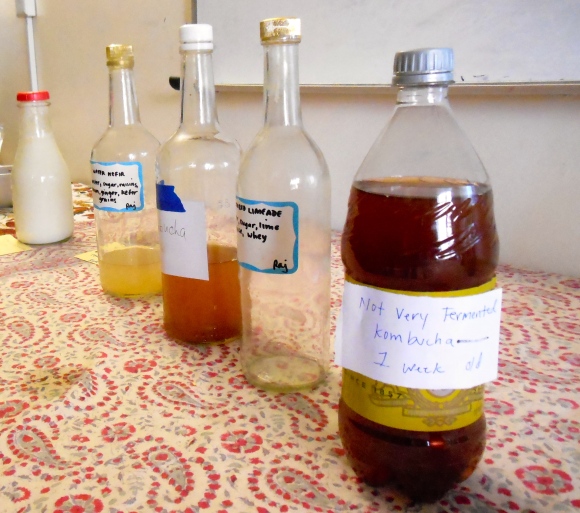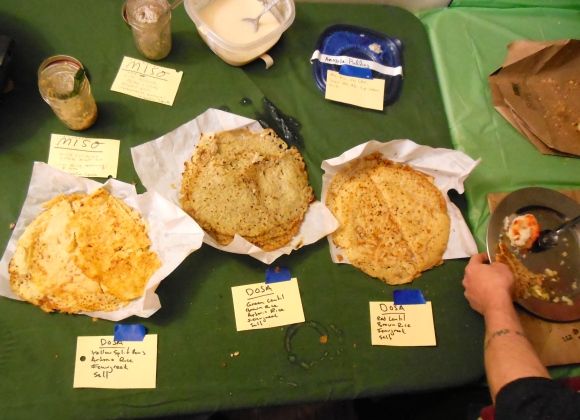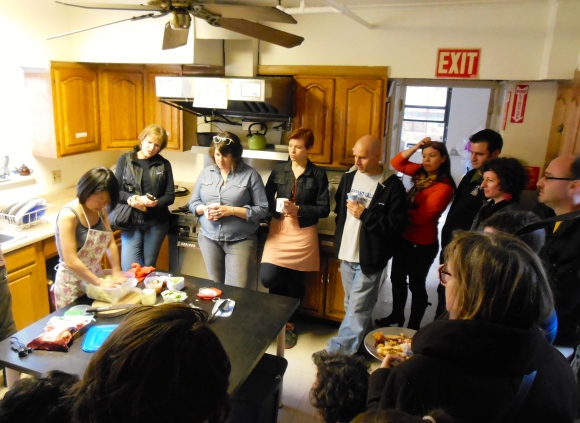Ferment! Ferment!
Get It Started.
Category Archives: Uncategorized
The Live Cultures Return
With just two days to go, it’s exciting to confirm that The Live Cultures will return to Ferment! Ferment! again for the second year to play a short set, starting at 6pm.
Another workshop added!
Amazake: Traditional Japanese drink rich in enzymes with Natsuko Yamawaki of Hakkoan
Although Amazake literally means “sweet sake,” it does not contain any alcohol. A deliciously sweet and creamy natural beverage, nowadays Amazake is enjoyed as a warming winter drink. However, during the Edo period of Japanese history (think samurai and geisha) Amazake was enjoyed year round. Children and the elderly drank Amazake to combat the exhausting effects of extreme heat during the summer monsoon season. Amazake can be thought of as a natural predecessor to today’s energy drinks. It contains so many natural vitamins and nutrients that it is often called a “natural IV drip.” Amazake is made with koji which is cultured rice that has been incubated overnight to produce a lightly fermented food rich in enzymes and nutrients. Amazake is easy to make at home. Learn to make your own Amazake to use in cooking and baking and as a healthy base for your daily smoothie!
Two workshops added to Ferment! Ferment!
Two exciting workshops have just been added to Ferment! Ferment!
Wild Vegetable Fermentation with Tara Whitsitt, Founder of Fermentation on Wheels
Learn the simple tradition of preserving vegetables through bacterial collaboration using local, seasonal ingredients. In this session you will discover the benefits of microbial enhancement and how you can creatively and fearlessly ferment in your own kitchen. This workshop targets beginner through intermediate students, offering a thorough overview of the art of lacto-fermented vegetables.
Nukazuke: Japanese rice bran pickles with Michaela Hayes of Crock & Jar and NYC Ferments
Nukazuke are pretty special among the many ferments in the world of fermentation, and require dedication and patience. The result is worth it! In Japan, families pass their nuka beds down from generation to generation, similar to a sourdough starter. Come join Michaela Hayes, Chef & Founder of Crock & Jar as she demonstrates how to start your own nuka pot. And then taste some of the delicious nuka pickles that come out of it!
FERMENT! FERMENT! 2015: Sunday, March 22 from 4pm to 8pm
FERMENT! FERMENT!
Gather for a celebration of homemade fermented food & drink!
Fermentation is everywhere and it deserves our love and attention. My goal is to encourage people to ferment foods, come together to enjoy them and share our experiences making them. In a world of fetishization of the food professional, let’s celebrate the amateur fermenter. Think of this as not only a party, but also an informal tasting.
Do you make an awesome kraut or a simple kimchi? Perhaps you craft something special with your homemade ferments — maybe you concoct a unique mustard from your own vinegar, cook up a satisfying soup from homemade miso, or incorporate home-aged cheese into a delicious dish. If so, this is your opportunity to share and indulge with like-minded folks.
The guidelines are simple: bring a homemade fermented food or drink or something made with a homemade ferment to share. If you’re unsure if it’s fermented, just drop me a line and ask. Alternatively (or additionally) bring a culture/starter to swap at the culture exchange table. If you’re a professional fermenter, bring a ferment that you’re not currently marketing or something you’re experimenting with.
This year Fermentation on Wheels will be parked outside the Free School and open to visitors! Additional workshops and skillshares are in the works, with a few slots still open, so if you have skills and you’d like to share, let me know. (Also, check out the great recent press on Fermentation on Wheels, Ferment! Ferment!, and NYC Ferments from the NY Times.)
Lastly, I’ve come to realize more and more over the last couple years that the party is a bit intimidating to some people who have never (intentionally) fermented anything, and especially to people who aren’t confident in the kitchen. So a couple years ago I started this blog as a way to provide curious novices the information they can use to get into the kitchen and out to the party. More updates and recipes coming soon.
Sunday, March 22
4pm to 8pm
Brooklyn Free School
372 Clinton Ave (between Greene & Lafayette)
Brooklyn, NY 11238
RSVPs to Zack at z.schulman@gmail.com requested, but not required. Please share this with anyone who might be interested.
This event is free, but we’ll pass the hat to support our generous hosts.
Ferment! Ferment! 2015 Coming Soon!
Plans are still in the works for the next Ferment! Ferment! Be sure to come back here for the latest details or shoot an email to z.schulman@gmail.com for updates.
In the mean time, check out the profile of Fermentation on Wheels and Tara Whitsitt from the NY Times today with shoutouts to many other familiar folks who have been part of Ferment! Ferment! over the years.
Live Music Just Added: The Live Cultures!
The Live Cultures will play a set from 5:45 to 6:15 at Ferment! Ferment!
The Live Cultures play original & traditional folk music from the Americas & abroad: guitar, violin, banjo, cello, mandolin, cello, washboard, and 4-part harmony.
A Simplified Kimchi
My love for kimchi is deep and evolving. Funky, crunchy, salty, tangy, bright, hot; I find it energizing and refreshing.
Just as there are thousands of grape-based wines out there made from myriad varietals of grapes, grown in numerous regions and fermented and aged in all sorts of different ways, there are probably hundreds, if not thousands (or more?!) of types of kimchi being made in the Korean peninsula and around the world. Napa cabbage-based kimchis are my favorite, but I’ve yet to run into a kimchi I didn’t enjoy.
There is no shortage of books about kimchi, but the simply titled Book of Kimchi by Chun Lee is worth seeking out for its framing of kimchi in a cultural, historical, and seasonal context, along with a wide range of recipes. I’ve never seen the book online for much under $100, but I’ve borrowed it from my local library more times than I can remember.
The recipe below is the kimchi that I most commonly make. I don’t claim that this is an “authentic” kimchi. Rather, it’s simply a streamlined version of one of the napa cabbage kimchis from the Book of Kimchi, using ingredients and tools that are generally easy to come by. Use it as a basic framework for experimenting and making the kimchis that you love; all of the vegetable and spice ingredients can be adapted to your liking.
Ingredients
- 1-2 lbs napa cabbage
- 1-3T salt
- Radishes (optional) any type: red, white, daikon: a few small ones or a few inches worth of the larger ones
- A few scallions
- Red chili pepper flakes, cayenne pepper, hot paprika, hot peppers, or any preservative-free hot sauce, to taste
- 1-4 cloves garlic
- 1/4 inch to 1 inch piece of ginger
- 1-2 small apples or asian pears, grated, minced or coarsely chopped
Equipment
- A glass, ceramic or plastic mixing bowl or jar (to pack the kimchi in as it ages)
- A glass, ceramic or plastic plate that fits inside bowl
- A smaller jar, drinking glass or bottle (to use as a weight)
- A clean towel or cloth large enough to cover the bowl
- A rubber band or string to secure the cloth around the bowl/jar
1. Start by removing any browned or damaged cabbage leaves from the head. Maybe they’re good to eat, but they’re probably not great in the kimchi.
2. Chop the cabbage. I enjoy larger chunks, but any size or shape will work. Use the core or don’t; it’s good either way.
3. Chop the radishes. I like half discs, but just like the cabbage, any shape or size will do.
4. As you chop the cabbage and radishes, toss them with about half the salt in a large bowl. The vegetables will start to release their juices and soften, making it easier to pack them into a jar or crock later.
5. Mix up the spice paste: chop the scallions, ginger and garlic. I love to finely grate the garlic so it blends in evenly and cut the ginger into slightly larger pieces so that I get a burst of ginger in every bite, but any size or shape works. Toss them all together with the whatever hot pepper you’re using and mix well.

Chopped apple (bottom left), pureed garlic (top right) and mini matchstick pieces of ginger (bottom right)
6. Mix everything together: the cabbage, radish, spice paste and apple/pear. Taste for salt and other flavors and add more of anything that you want. It should be distinctly salty, but not overwhelmingly so. Using less salt allows the kimchi to ferment faster, while more salt slows it down.
7. Pack the kimchi into a jar, crock or bowl just as you would with sauerkraut. Napa cabbage tends to be softer and have a lot more water in it, so there’s less of a need to pack it into the fermenting vessel as firmly as you would with green or red cabbage, but do try and push out the air pockets.

All the ingredients mixed together and packed into a jar. In this batch I used a mix of red chili flakes and a pale orange hot sauce, so the color is quite light. Using a lot of red chili flakes (or powder) can give your kimchi a beautiful, striking red hue.

I forgot to take a photo of the jar and weight setup with the kimchi, but this is an example of what it looks like with a different ferment (in this case, kimchi-style carrot relish): a drinking glass tumbler used as a weight on top of the veggies in their brine, packed in a quart-sized mason jar.
8. The next day, check on the kimchi. Taste it. Make sure that the brine has risen enough to cover the vegetables and push the weight down to expel air pockets. If there isn’t enough brine to cover the vegetables, add brine to cover them. Brine can be mixed up in a ratio of approximately 1 tablespoon salt dissolved in 1 cup of water. Let it continue to ferment for a day or two or let it go for weeks. Enjoy it as it ages or throw it in the fridge to hold it at the flavor you like. Fridge temperatures will allow the kimchi to continue to ferment, but very slowly.
It’s never too late to say thanks
As I prepare for this years event, I realize that a much belated thanks is due to everyone who came out and participated in Ferment! Ferment! last year. Whether you brought something funky to share, lead a workshop, helped set up, cleaned up, produced signage, threw money in the jar, or entertained us all with your music, you are the folks who made it happen. Thank you!
I certainly hope to see you all again later this month, and in the mean time check out some photos from last year.

